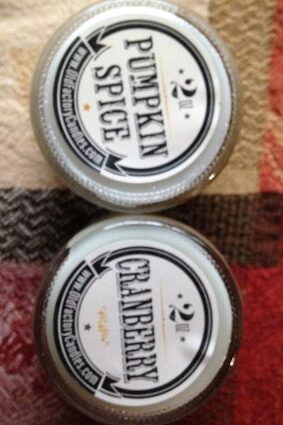Pumpkin pie spice was one of the first convenience foods in the mid 20th century, bundling cinnamon, ginger, nutmeg, allspice, and cloves together into one jar — in the right proportions for pumpkin pie –for cooks too lazy to measure the spices out separately. In the 1960s, it came to be known as pumpkin spice, and by the end of the 20th century it was a popular candle scent.
Soon it spread to coffee shops, culminating in Starbucks’ 2004 Pumpkin Spice Latte. One of our clients was worried about using the phrase without permission from Starbucks, but they weren’t the first to put it into coffee drinks. Now you can find it in everything from air fresheners to candy. In fact, with Christmas Creep putting “the holidays” into everything from mid-September on and coyness about using the word “Christmas” in public, you could call the fourth quarter “Pumpkin Spice season” and have done with it.
But Pumpkin Spice doesn’t have undisputed domination. There’s also cranberry.
Cranberries are a native American fruit with a growing season from April to November and a strong historical association with Thanksgiving, just like pumpkin spice. Their brilliant scarlet color makes them a natural for Christmas, too.
Who’s really winning? We turned to online measurement to find out.
Pumpkin Spice is mentioned on average every 21 seconds, according to Social Mention, with 3 negative mentions to every 97 positives. Cranberry comes up every 22 seconds, with sentiment running 11:1 in favor. Passion for cranberry stands are 25% while pumpkin spice garners 28%.
Pinterest offers uncounted — and, in the time we have available, uncountable — options for both.
So far it looks pretty even, but Google Trends shows a different story. Google Trends counts the numbers of searches at Google, which is probably a fairly good measure of interest. Google Trends shows steady seasonal growth for searches for “pumpkin spice,” from a ranking of 5 in 2006 to 25 this fall. Cranberry doesn’t show as great an increase — but they’ve gone from 86 to 98 during the same time period.
Pumpkin spice may be on the rise, and impressively so, but cranberry looks like an unseatable holiday powerhouse.
Are there any other players in this space? I’m predicting pomegranate. As you can see below, pomegranate peaks each year in November along with cranberry (pumpkin spice peaks in October). It’s rising a little more slowly than pumpkin spice with 11 to 37 during the time period shown, but it’s getting into cranberry’s territory, unlike pumpkin spice.
Google forecasts continued rise for both cranberry and pomegranate along their current trajectories but isn’t able to make a forecast for pumpkin spice. After all, pumpkin spice is certainly moving into pomegranate’s space, but it is also getting some backlash.
“Pumpkin spice haters” brings up anti-pumpkin spice rappers at Google, compared with “cranberry haters” which only produces new recipes for cranberry sauce. “Pomegranate haters” moves Google to suggest that maybe the searcher meant “pomegranate hades” — which makes sense if you remember your Greek mythology. In other words, pumpkin spice is the only one that is really irritating people.
Pomegranate currently gets mentioned just once per minute, according to Social Mention, and has only 9% passion — but sentiment is 31:1 in favor. A Mediterranean fruit, pomegranate is often called a super food, and it has the holiday color advantage cranberry does. And yes, it’s doing well on Pinterest, too.
For this year, pumpkin spice is bringing up the rear but also getting a lot of buzz as the trendy flavor… and the hate trendy things can expect. For next year, we’ll have to wait and see.
What can you find out about the trends in your field, about your competitors, and about your brand from social listening? Probably more than you expected.







Leave a Reply